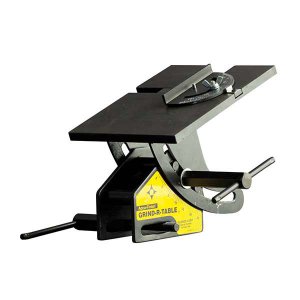I did some online searching when I was working through powering my 6x48 BS.
I just found that I had saved the results. Here is what I have with associated sources.
----------------------------------------------------------------------------------------
Delta 6x48 Sander Motors and Pulleys
Modified on 2009/04/25 15:11 by jayeson Categorized as Electrical, Restoration Topics, Sanders
» Delta 6x48 Belt Sander » Delta 6x48 Sander Motors and Pulleys
http://wiki.vintagemachinery.org/Delta6x48Motors.ashx
Motor Sizing¶
From the 1936 "Delta 6" Belt Sander" publication{Reference:
http://www.owwm.com/mfgindex/pubdetail.aspx?id=1873|Delta 6" Belt Sander}: "It is inadvisable to install less than a 1/2 h.p. motor in a unit of this size, and a 3/4 h.p. motor with double V-belt drive should be employed if very heavy sanding is to be done. Only a constant speed, repulsion-induction motor should be used." With the quality of modern V-belts, a single belt drive should be sufficient. Earlier motor horsepower ratings were more conservative than today, especially for repulsion-induction motors. Late model sanders were supplied with a 1.5 hp induction motor.{Reference:
http://owwm.org/viewtopic.php?t=16336|Delta 6x48 belt sander motor size}
Pulley Sizing¶
From the 1936 "Delta 6" Belt Sander" publication{Reference:
http://www.owwm.com/mfgindex/pubdetail.aspx?id=1873|Delta 6" Belt Sander}: "With a 1725 r.p.m. motor, the pulley recommendations are 5 in. for the motor and 4 in. for the sander, giving a belt speed on 3100 feet per minute. This is a good all-around average for general work, and is as fast as the belt can be operated for woodworking without glazing or burning." For a 3450 rpm motor, simple math suggests a 2-1/2" pulley however the 1985 parts list calls for a 2-3/4" pulley. {Reference:
http://owwm.org/viewtopic.php?t=27788|6x48 sander gearing? Quick question!} Alternatively, the band saw calculator may be used with Band Wheel Dia. set to 5.5 in. You are looking for a SFPM of 3,100.
---------------------------------------------------------------------------------------
Daryl
MN


